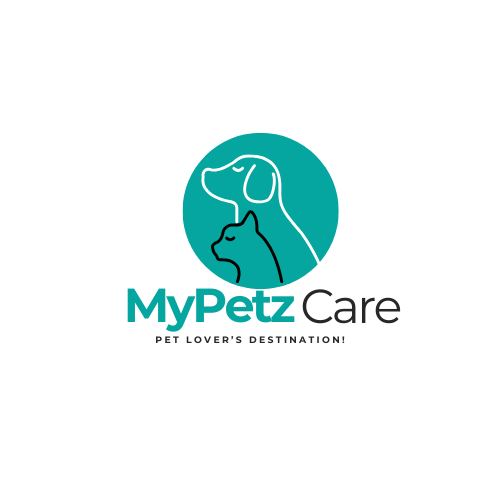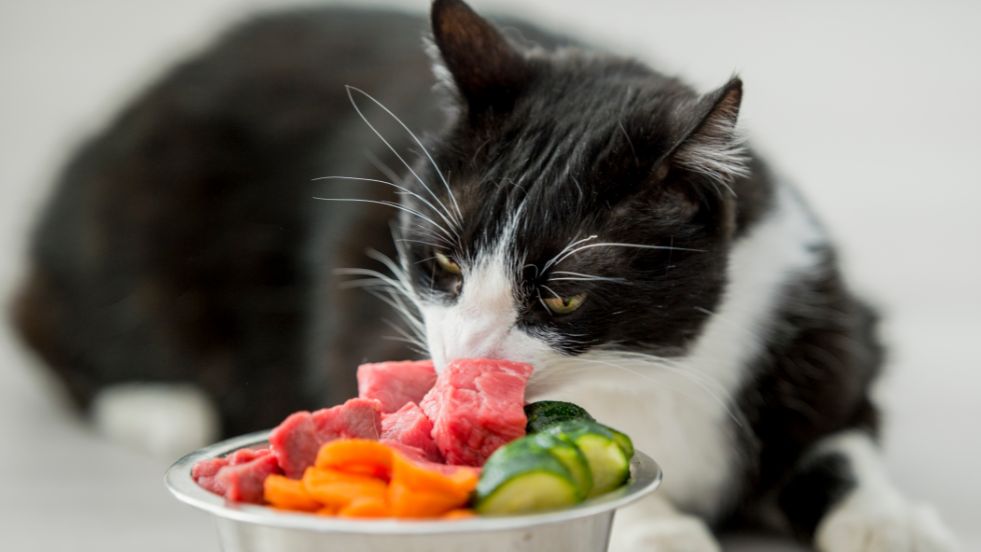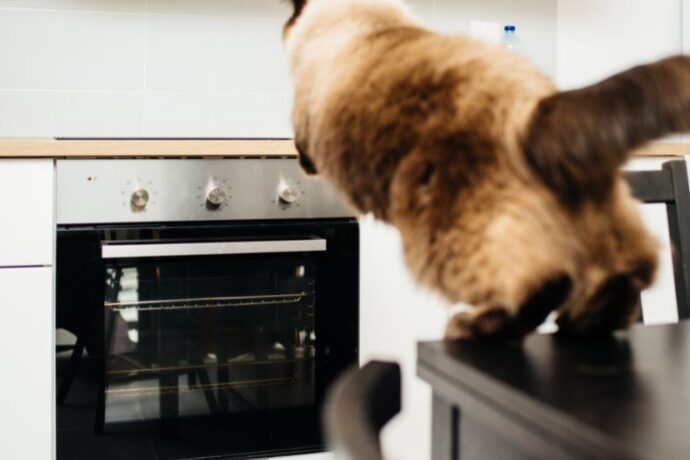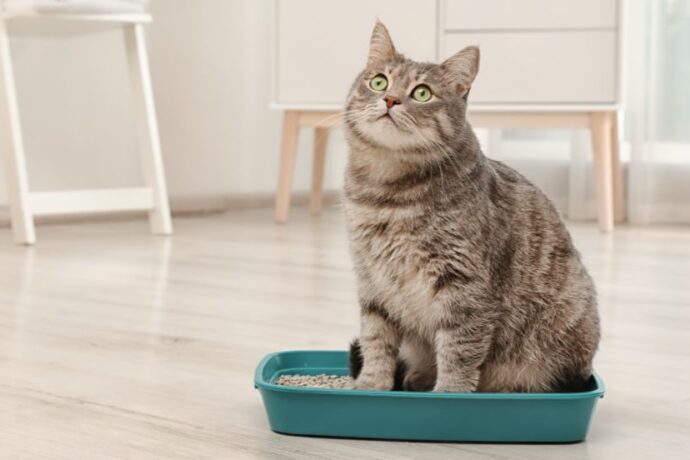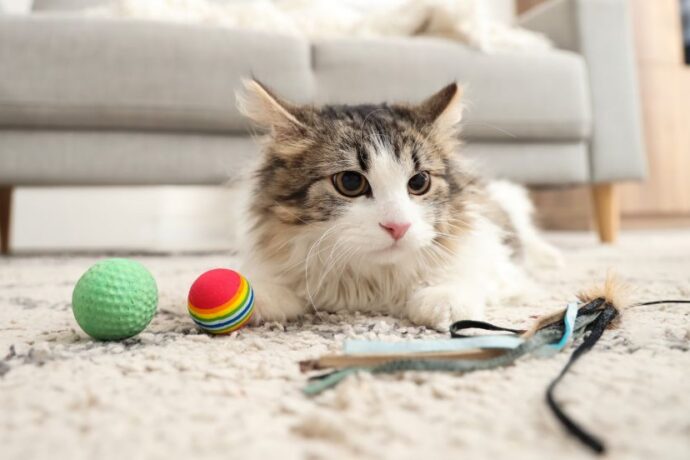In recent years, the raw food diet for cats has gained popularity among pet owners seeking a more “natural” way to feed their feline companions. The idea stems from the belief that domestic cats, being descendants of wild hunters, are biologically suited for a diet of raw meat, bones, and organs. Proponents claim raw feeding can lead to shinier coats, improved digestion, and better overall health.
However, veterinarians and animal nutrition experts often caution against raw diets, citing potential health and safety risks. To help you make an informed decision, let’s explore what a raw cat food diet entails, its possible benefits, risks, and what the latest research reveals.
Understanding Raw Cat Food: The Basics
Raw cat food typically consists of raw meat, organs, and bones, sometimes supplemented with eggs or small amounts of vegetables. It aims to mimic the natural diet of wild cats, which primarily includes prey animals. Unlike kibble or canned food, raw diets are not cooked, which means both the nutrients and potential pathogens remain intact.
Commercial vs. Homemade Raw Cat Food: What’s the Difference?
Cat owners have two primary options when choosing a raw diet: buying pre-prepared commercial raw cat food or making it at home. Each comes with its own pros and cons.
| Aspect | Raw Food Diet for Cats | Commercial Cat Food (Kibble/Canned) |
| Ingredients | Primarily raw meat, organs, bones; sometimes eggs or supplements | Processed meat, grains, fillers, synthetic vitamins/minerals |
| Nutritional Balance | Can be complete if professionally formulated; risk of deficiencies if homemade and unbalanced | Typically formulated to meet AAFCO standards; more consistent balance |
| Digestibility | Often reported as highly digestible; smaller, less odorous stools | Varies by brand; may contain fillers that reduce digestibility |
| Health Benefits (Reported) | Shinier coats, improved dental health, increased energy, reduced stool odor | Reliable nutrition, convenience, proven long-term safety |
| Risks | Bacterial contamination (Salmonella, E. coli), nutritional imbalance, and bone hazards | Potential for preservatives, lower-quality ingredients in some brands |
| Convenience | Requires storage, thawing, careful handling, and strict hygiene | Easy to store, portion, and feed with minimal preparation |
| Aspect | Raw Food Diet for Cats | Commercial Cat Food (Kibble/Canned) |
| Risks | Bacterial contamination (Salmonella, E. coli), nutritional imbalance, and bone hazards | Potential for preservatives, lower-quality ingredients in some brands |
| Convenience | Requires storage, thawing, careful handling, and strict hygiene | Easy to store, portion, and feed with minimal preparation |
| Cost | Often more expensive, especially high-quality or commercial raw options | Usually more affordable; wide range of price points |
| Suitability | May not be safe for kittens, seniors, or immunocompromised cats without professional oversight | Suitable for most cats if nutritionally complete and appropriate for the life stage |
Feeding Cats Homemade Raw Food: What You Need to Know
Homemade raw diets give owners complete control over the ingredients, which can be appealing if your cat has allergies or sensitivities. You can choose high-quality meats, organs, and supplements to customize your cat’s meals.
The challenge lies in ensuring the diet is nutritionally balanced. Cats require specific nutrients, such as taurine, vitamin A, and arachidonic acid, which must be provided in the correct amounts. Without professional guidance, deficiencies or imbalances can develop, leading to serious health issues.
Commercial Raw Cat Food: Convenience with Caution
Commercial raw diets are sold in various forms, including frozen, freeze-dried, and dehydrated. These products are typically formulated to meet the nutritional standards set by organizations such as the Association of American Feed Control Officials (AAFCO). This makes them more reliable in terms of balance compared to homemade recipes.
However, they can be costly, and like homemade raw food, they still carry risks of bacterial contamination if not stored and handled properly. Pet parents should look for reputable brands that use high-quality ingredients and undergo regular safety testing.
Comparing Raw Diets with the BARF Diet for Cats
both approaches emphasize feeding raw meat, bones, and organs, the BARF diet sometimes includes vegetables, fruits, or supplements.
For cats, who are obligate carnivores, plant-based ingredients are less important than for dogs. Cats primarily require animal proteins and fats to thrive, so any raw diet must reflect their strict carnivorous needs.
The term BARF (Biologically Appropriate Raw Food or Bones and Raw Food) is often used interchangeably with raw feeding. While
Is Raw Cat Food Healthier Than Traditional Diets?
Advocates of raw diets argue that they provide health benefits over commercial kibble or canned food. Reported improvements include:
- Shinier coats and reduced shedding
- Better dental health from chewing raw bones
- Smaller, less odorous stools
- Increased energy and muscle tone
However, scientific evidence is still limited. A study published in the Journal of Animal Physiology and Animal Nutrition (2017) found improved digestibility in dogs on raw diets, but similar large-scale studies in cats are lacking (1)(2). On the flip side, research in the Journal of Feline Medicine and Surgery highlights concerns about pathogens and nutritional imbalances in raw feeding.
Safety Concerns Every Cat Owner Should Consider
While raw feeding may sound natural, it comes with risks that cannot be ignored:
Bacterial Contamination: Raw meat can carry Salmonella, E. coli, and Listeria, which can infect both cats and humans. Even healthy cats can shed these bacteria in their feces, putting household members at risk.
Nutritional Imbalances: Homemade raw diets without proper formulation may lack taurine, calcium, or essential vitamins, leading to long-term health problems.
Bone Hazards: Raw bones can splinter, causing internal injuries, blockages, or dental fractures.
Vulnerable Cats: Kittens, elderly cats, and those with compromised immune systems are more susceptible to illness from raw diets.
Organizations such as the American Veterinary Medical Association (AVMA) advise caution, recommending that pet owners consider the risks before feeding raw (3).
Preparing Raw Cat Food Safely at Home
If you choose to feed your cat raw food, strict safety measures are essential:
- Source meat from trusted suppliers with high food safety standards.
- Store raw food in the freezer until use, and thaw it in the refrigerator.
- Wash hands, utensils, and surfaces thoroughly after handling raw meat.
- Avoid cross-contamination with human food.
- Consult a veterinary nutritionist to ensure your recipes meet feline nutritional requirements.
Frequently Asked Questions (FAQs)
1. Can I feed my cat a raw diet without bones?
A. Yes, but you must supplement with calcium, as bones are a major source of this nutrient. Without adequate calcium, cats can suffer from bone weakness and other health issues.
2. Are freeze-dried raw diets safer than fresh raw meat?
A. Freeze-dried raw diets reduce, but do not eliminate, the risk of bacterial contamination. They are more convenient to store and handle, but still require caution.
3. Can kittens be fed a raw diet?
A. Kittens have higher nutritional needs and weaker immune systems, making them more vulnerable to deficiencies and infections. A raw diet for kittens should only be fed under veterinary guidance.
Conclusion:
The raw food diet for cats is a complex topic with strong opinions on both sides. While potential benefits like improved digestion, shinier coats, and better dental health appeal to many cat owners, the risks of bacterial contamination, nutritional imbalance, and bone-related injuries cannot be overlooked.
If you’re considering a raw diet for your cat, consult a veterinarian or a certified animal nutritionist first. Choose a commercial raw diet that meets AAFCO standards if convenience and safety are priorities, or work closely with professionals to design a balanced homemade plan.
References:
1. Raw diets for dogs and cats
2. Current Evidence on Raw Meat Diets in Pets
3. Current knowledge about the risks and benefits of raw meat
